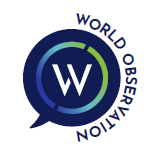Supreme Court and Employee Benefits – Potential Implications for Employee Benefit Plans
August 7, 2024
Jay KirschbaumExecutive Summary
Loper Bright Enterprises v. Raimondo is a landmark Supreme Court case that overturned the long-standing Chevron deference doctrine, which previously required courts to defer to administrative agencies' interpretations of statutes. With Chevron deference no longer in effect, the Firestone standard—which generally gives deference to employers' interpretations of their own plans—may gain greater significance. This shift could necessitate more thorough documentation of employers' deliberations regarding employee benefit plans.
Background on the Chevron Decision
The Chevron doctrine originates from the 1984 Supreme Court case Chevron U.S.A., Inc. v. Natural Resources Defense Council, Inc., involving the Environmental Protection Agency's (EPA) interpretation of the Clean Air Act. The core issue was whether courts should defer to administrative agencies' interpretations of ambiguous statutes they administer. The Court fashioned a two-step approach to reach its decision.

Key Points of the Chevron Decision:
- Two-Step Framework:
- Step One: Courts must determine if Congress has directly addressed the specific issue. If the intent of Congress is clear, that intent must be followed as expressed in the statute.
- Step Two: If the statute is ambiguous or silent on the issue, courts must defer to the agency's interpretation as long as it is reasonable.
- Rationale:
- Agencies possess expertise in their respective areas, making them better equipped than courts to interpret ambiguous statutes within their jurisdiction.
- It respects the separation of powers, recognizing that agencies, not courts, are tasked with executing the law.
- Impact:
- Chevron deference has significantly influenced administrative law, granting agencies substantial authority in interpreting and implementing federal statutes.
- It has affected a wide range of regulatory areas, including ERISA benefit plans.
Relevance to Employee Benefit Plans
Employee benefit plans in the United States are regulated by federal agencies such as the Department of Labor (DOL) and the Internal Revenue Service (IRS). These agencies have historically relied on the Chevron doctrine to interpret and enforce statutes like ERISA and the Internal Revenue Code, providing guidance and regulations that plan sponsors must follow in the administration of their employee benefit plans.
 Many employee benefits experts viewed the Chevron doctrine as unrealistic in the context of employee benefit plans. They argued that agency officials often lacked practical experience with employee benefit plans prior to their government employment, resulting in burdensome and ineffective guidance. For example, under the ACA, one of the IRS's affordability of "safe harbors" could only be determined retrospectively, illustrating a lack of practical experience that would be quickly discernable to professionals with that experience.
Many employee benefits experts viewed the Chevron doctrine as unrealistic in the context of employee benefit plans. They argued that agency officials often lacked practical experience with employee benefit plans prior to their government employment, resulting in burdensome and ineffective guidance. For example, under the ACA, one of the IRS's affordability of "safe harbors" could only be determined retrospectively, illustrating a lack of practical experience that would be quickly discernable to professionals with that experience.
Firestone Standard May Take on More Relevance
With Chevron deference overturned, employers may regain some control over their plans by paying more attention to the Firestone standard. The Firestone doctrine, from the Supreme Court case Firestone Tire & Rubber Co. v. Bruch, addresses the judicial review standard for benefit denials under ERISA plans. Under this standard, courts generally defer to the plan administrator's interpretation of the plan unless that interpretation is found to be arbitrary and capricious. Only then would the courts be free to review a benefit denial de novo (anew).

Implications for Employee Benefit Plans in Light of Chevron and Firestone:
- Judicial Deference: Chevron applies to agency interpretations of statutes, while Firestone applies to plan administrators' interpretations of benefit plans.
- Plan Administrator Authority: Under Firestone, courts defer to the administrator's interpretation of plan terms if discretionary authority is granted.
- Regulatory Interpretations: Limiting Chevron deference could lead to more active judicial interpretation of ERISA-related regulations, potentially reducing agency influence.
- Legal Uncertainty and Litigation: Changes to Chevron could increase legal challenges and uncertainty, creating a complex legal landscape for employers and plan administrators.
- Employer and Plan Administrator Practices: Employers and administrators must meticulously draft plan documents and ensure compliance with both agency regulations and judicial interpretations. Clear, precise language in plan documents is crucial for withstanding judicial scrutiny.
Conclusion
The Supreme Court's recent decision overturning Chevron deference provides employers with an opportunity to assert more control over their employee benefit plans. To ensure their interpretations and administrative discretion are respected, employers should thoroughly document their decision-making processes. This documentation will help demonstrate the rationale behind their decisions and facilitate compliance with legal standards.
This Legal Update is not intended to be exhaustive, nor should any discussion or opinion be construed as legal advice. Readers should contact legal counsel for legal advice. All rights reserved.


